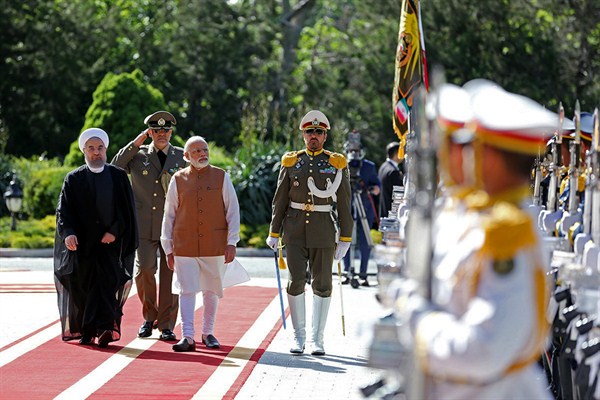With international sanctions against Iran lifted, India is keen to get ties with Tehran back to their pre-sanctions level. This was reflected in the flurry of high-level visits that took place this year in the run-up to Prime Minister Narendra Modi’s visit to Iran in late May. While India is looking to Iran to help in its transition to an economy fueled by natural gas, it is also betting on Iran to be its gateway into markets in Central Asia, through the development of the Iranian port of Chabahar. For its part, Iran seems keen to deepen its strategic economic ties with India, which continues to have a strong energy relationship with Saudi Arabia. India’s ambitions may also allow Iran to play a bigger role in emerging trade and transportation corridors in Eurasia, where China and Pakistan have already partnered.
As expected, among the dozen agreements signed during Modi’s visit, the highlight was a bilateral contract for the development and operations of the port of Chabahar between India Ports Global Private Limited and Arya Banader of Iran. First mooted in 2003, the project to develop this key port on the Gulf of Oman gained momentum earlier this year when India’s Cabinet approved a $150 million credit line to Iran’s Ports and Maritime Organization. Two berths under Indian control at Chabahar are expected to become operational within 18 months. Laying the groundwork for Modi to conclude both the development and credit line agreements for Chabahar had been high on the agenda for Indian Foreign Minister Sushma Swaraj during her visit to Tehran in April.
Gas is a key part of India’s plans for Chabahar. Indian Energy Minister Dharmendra Pradhan’s own trip to Iran, which preceded Swaraj’s visit, aimed to secure Iranian consent for India’s state-owned OVL to develop the offshore Farzad-B gas block in the Persian Gulf, which the company had discovered back in 2008. Estimated to hold up to 12.8 trillion cubic feet of recoverable gas, Farzad-B is the single biggest overseas gas find ever made by an Indian state-owned oil company; OVL is looking to invest $7 billion to exploit it. Iran has reportedly agreed to keep Frazad-B off the auction block. During Modi’s visit, both sides expressed the hope that an agreement will be concluded by the third quarter of 2016, leading to further developments, including a commercial contract for Farzad-B later this year.

